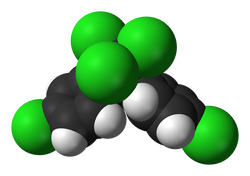
 There are many that hold the opinion that bed bugs have been on the rise due to the banning of the DDT Pesticide. DDT (dichlorodiphenyltrichloroethane) is a tasteless and almost odorless compound that was synthesized in 1874. The Chemical didn't begin to see widespread use till World War 2 (WWII) when it was used for controlling malaria and typhus saving millions of civilians and troops. In 1948 a Swiss Chemist by the name of Paul Hermann Müller discovered that DDT was an excellent poison to eliminate arthropods. At the conclusion of WW2 the use of DDT became widespread and the Commercial, Industrial, and Agricultural insecticide became widely available. At the same time of DDT's Growth there was an equal resistance waving the flag of Environmental concern. Danger on the environment, Bird egg-shell thickness, and Human Health were the major concerns of its use or misuse. The voice of those who cried foul on the use of DDT increased through the years. In 1967 the Environmental Defense Fund (EDF) was created with the specific purpose of banning the use of DDT. The debate got hotter after DDT was studied for a time and it was concluded that there was no imminent danger to wildlife or human health. This increased criticism and controversy on the subject. In 1971-1972 A seven-month hearing was conducted over the use of DDT and in the summer of 1972 a ban of the substance was decreed in almost all its forms. This post takes neither position on DDT and its effects nor on the effects of the bed bug outbreak. The violent increase of Bed Bug infestations in the United States has raised questions as to effects of banning DDT. Regardless if DDT is a banned substance or not, if you have a problem with bed bugs you need to get help now! The only effective technique for bed bug removal, extermination, and eradication is an All-Natural, Green, Bed Bug Heat Treatment performed by professionals.
0 Comments
Leave a Reply. |
Bed Bug DivisionWe are committed to the complete eradication of Bed Bugs Archives
December 2014
Categories
All
|

 RSS Feed
RSS Feed
